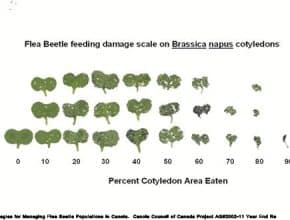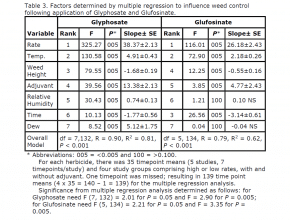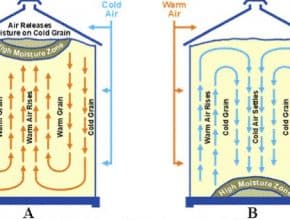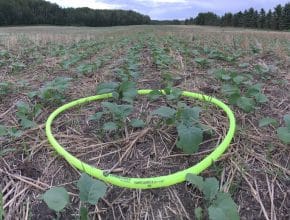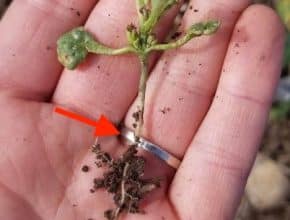Home / Canola Watch / Page 56
-
The action threshold for flea beetles in canola crops in Canada is an average leaf area loss of 25 per cent or more. How do you make that assessment?…
-
Pythium species, Fusarium species and Rhizoctonia solani – the "three amigos" – can cause seed rots, root rots and stem decay on young canola plants. Seed treatments are generally pretty good, but Krista Anderson from Bayer, Mark Belmonte from University of Manitoba and Autumn Barnes from the CCC explain the factors that can increase risks…
-
from the perspectives of herbicide uptake, efficacy and label requirements, night spraying is OK as long as weeds are not under any stress and are growing actively going into the evening…
-
Canola fields may benefit from a top-dress application of nitrogen or sulphur (or both) if logistics and weather prevented the full recommended application of fertilizer at or before seeding, and if improved weather conditions (rainfall, for example) have increased the yield potential of the crop…
-
Any canola in storage should be checked – just to make sure it's safe. Reports of heating bins are trickling in this week…
-
When growers have canola stands of fewer than four plants per square foot — due to low seeding rates, poor emergence, insects*, crusting, frost, wind, etc. — they grapple with the question whether to reseed…
-
Plant counts can influence management decisions for the current crop (if counts are low, you’ll need to protect all of those plants) and for next year’s seeding rate and plant protection decisions. Plant counts are an important part of the checklist for your post-emergence assessments…
-
Canola Watch has many valued connections, including the Canola Council of Canada, SaskCanola, Alberta Canola and Manitoba Canola Growers, as well as research institutions, government extension departments, ag businesses, universities and other commodity groups. This section provides timely support for canola-related projects outside of Canola Watch…
-
Got canola emergence issues? Little canola plants are vulnerable to many different risk factors, including seedling diseases. Seed treatments are usually very good at managing the common seedling disease pathogens of canola, however seed, seedling and root rots can flare up under the right circumstances. Here are details about the three pathogens in the canola seedling disease complex, and the…

